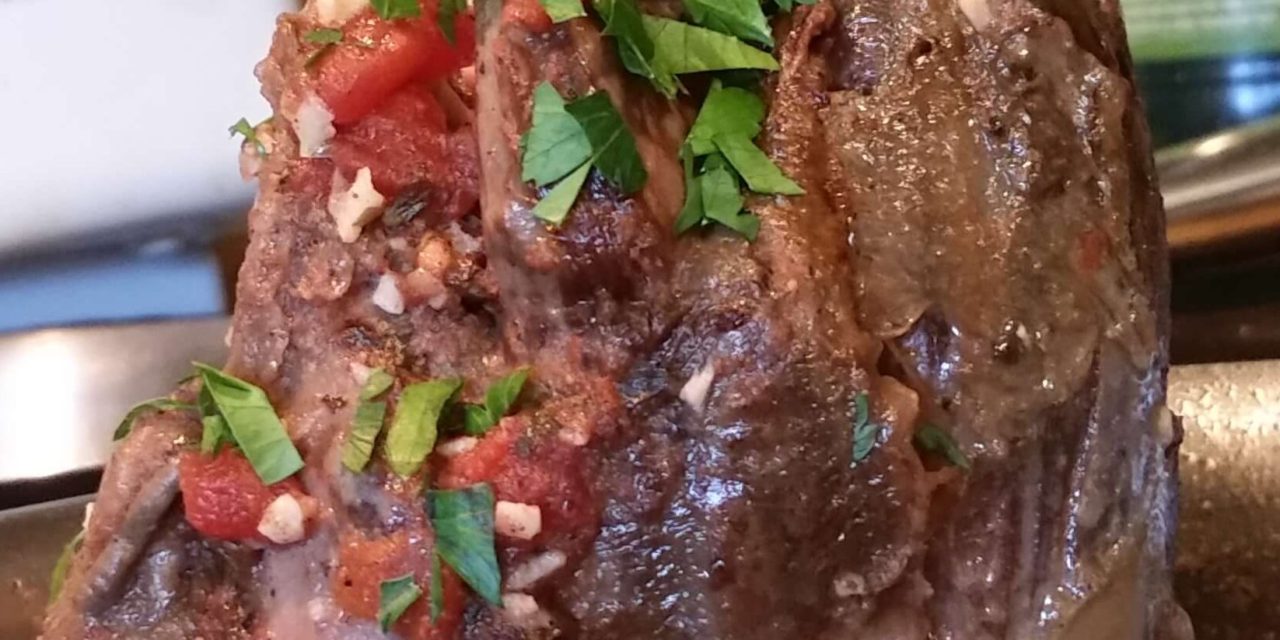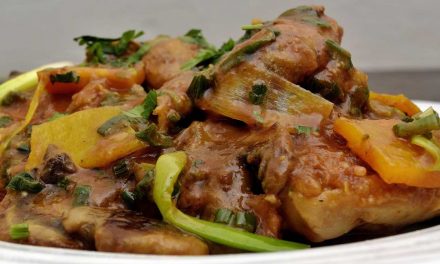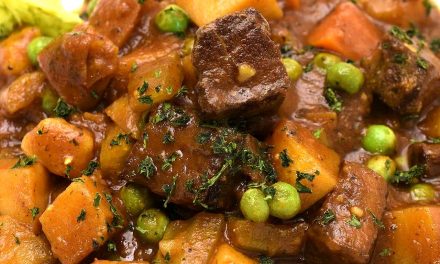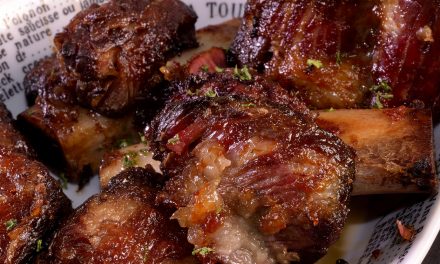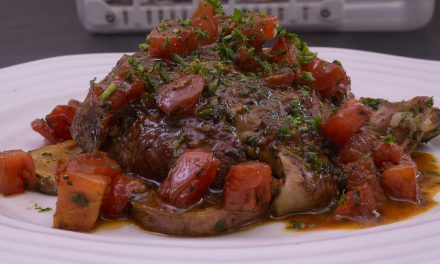Lamb Shanks pose a number of challenges for restaurants, not to mention home cooks. Among the toughest cuts of lamb, they always seem to come out just not quite tender enough, or so tender as to no longer be recognizable. Sous Vide may be best way to manage this. The control over temperature and time is so precise, and it is so easy to confirm the desired tenderness during the processing cycle–one need merely pinch the meat through the bag. If it feels tender, it is!
This post is a root article for Sous Vide Resources. All root articles feature a specific Sous Vide preparation of beef, pork, other meats, chicken, fish, shellfish, vegetable or other food that will form the basis of another finished dish.
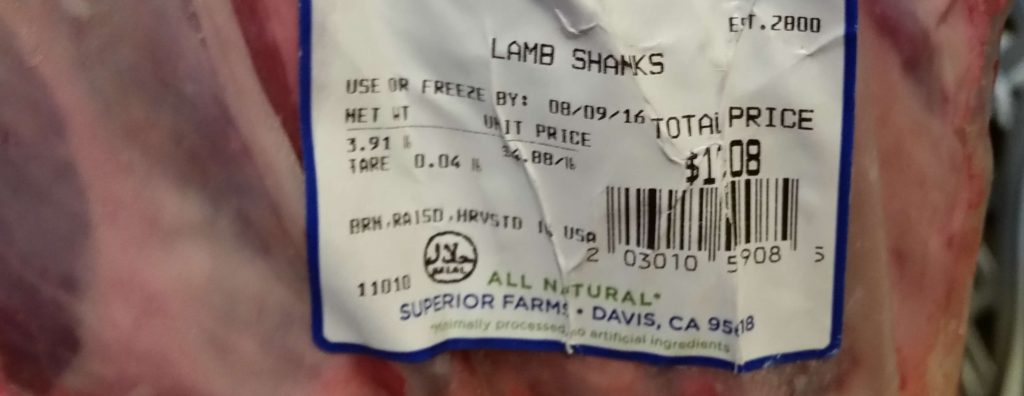
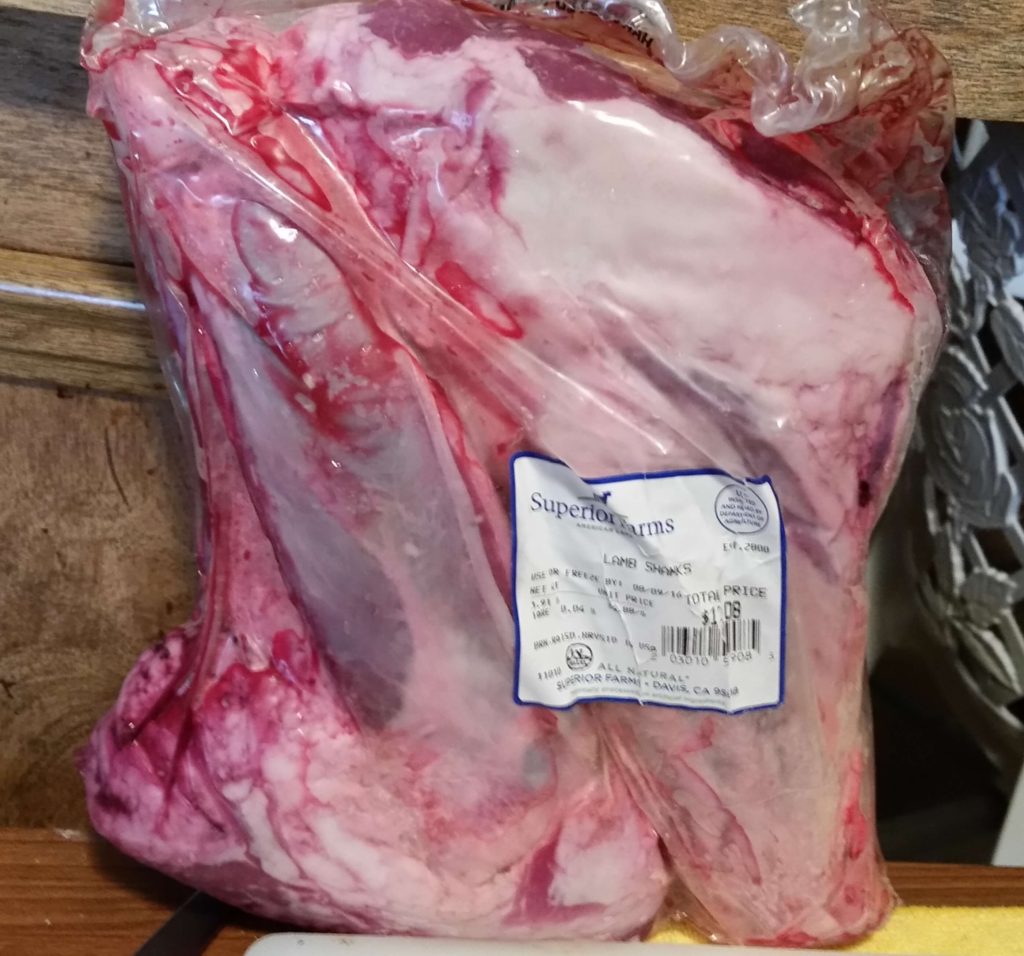
Whether your lamb is from New Zealand, Australia, the USA, or elsewhere, the process remains the same, although sizing may be considerably different.
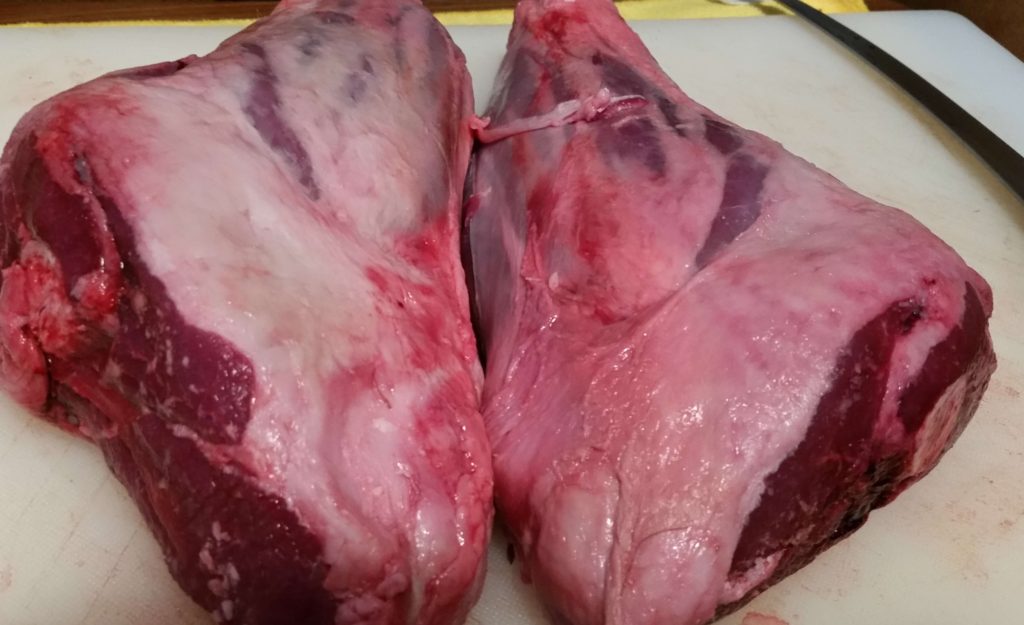
These two hind shanks weigh about 31 oz. each, which is really almost enough for two people to share (each). For a single portion, they usually size at about 16-18 oz.
Preparation of Lamb Shanks and Beginning Sous Vide Process
Time and Temperature Tips
Processing temperatures start at low as 135F for this particular cut, as bone-in cuts are typically more resistant to heat penetration. This one we processed @150Fx24 hours, which is my typical preference. Time results may vary, so always be prepared to utilize the pinch test. SV is so forgiving, even if this package went 48 hours, it would still be desirable.
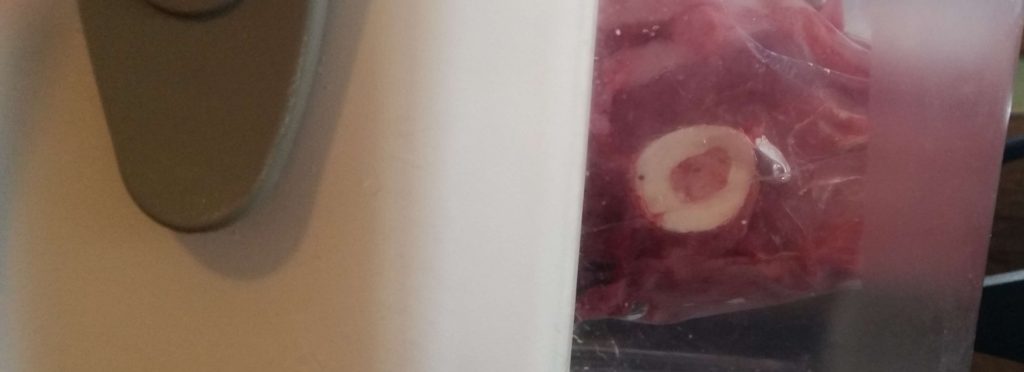
The bag will protect the marrow from draining, unlike oven heat. Not such a big deal with lamb, but very useful for beef and veal shank preparations.

Once you have determined that your shank is tender, remove it from the tank and plunge it into an ample amount of ice water or cold tap water–this is called “shocking.” Putting the warm bag directly in the refrigerator is not safe–refrigerators and even freezers are not capable of chilling the package fast enough to prevent spoilage, and the ambient heat of the package can damage other food in the refrigerator. After shocking, you can even see a little lamb fat clinging to the meat–Lamb fat has a very high melting point, lots of stearine. This is why it smokes and burns when it gets too much heat.
In future articles we’ll use this preparation to make:
- Lamb Persillé
- Fennel Braised Lamb Shanks with Pear Tomato Sugo

